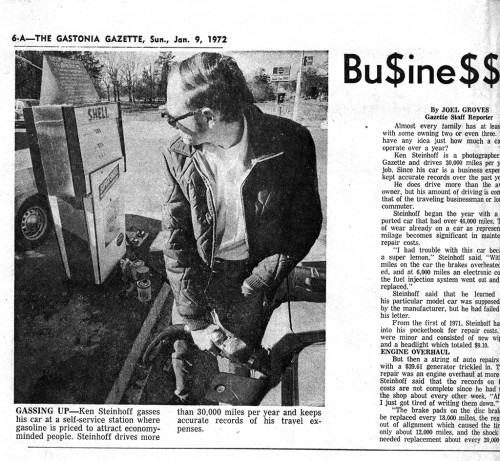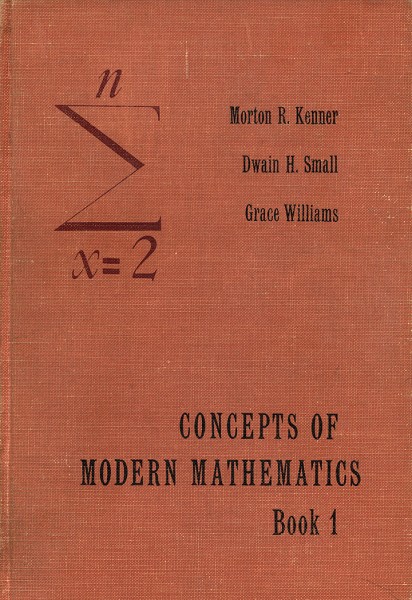 Let’s get this out of the way first: I was a lousy math student. I could, with some tutoring from Friend Shari and Dad, grasp the concepts, but I was too interested in debate and photography to waste time (from my perspective) doing the homework.
Let’s get this out of the way first: I was a lousy math student. I could, with some tutoring from Friend Shari and Dad, grasp the concepts, but I was too interested in debate and photography to waste time (from my perspective) doing the homework.
Geometry was even a bigger bore: I mean, why bother “proving” stuff that had already been “proven.” Come on, let’s plow some new ground here.
We had soft-cover books
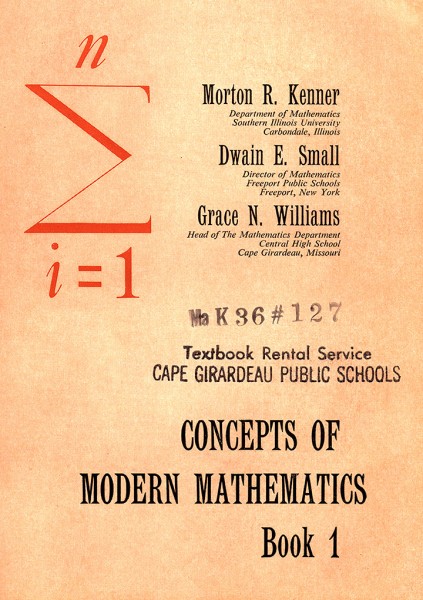 We folks in the Class of ’65 had “proof” books of the Concepts of Modern Mathematics. They books were printed on regular 8-1/2 x 11″ paper and had a pink heavyweight paper front and back with some kind of black tape binding, if I recall correctly.
We folks in the Class of ’65 had “proof” books of the Concepts of Modern Mathematics. They books were printed on regular 8-1/2 x 11″ paper and had a pink heavyweight paper front and back with some kind of black tape binding, if I recall correctly.
By the time Wife Lila’s Class of ’66 got there, the book was a real hardback with Grace Williams’ name on the flyleaf as an author.
Misses Williams and Rixman were good teachers and extraordinarily patient with the likes of me. I mentioned to Shari one day not long ago that I was sure they gave me a higher grade in their classes than I deserved.
Her theory was that if they thought a student had the potential to accomplish something if they ever pulled their act together, they’d cut them some slack rather than give them a low grade that might torpedo their chances to go on to college. I’m not sure I was THAT pitiful, but I appreciate them giving me the benefit of the doubt.
Wife Lila was more diligent
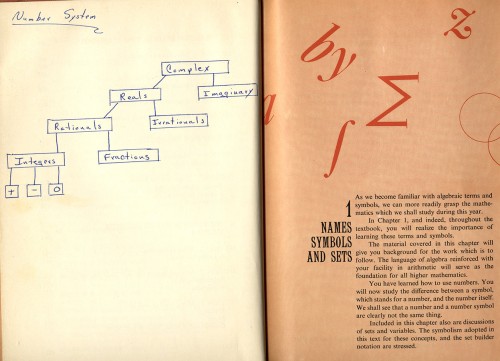 My pink-covered books are lost in a box somewhere in my storage shed, but Lila’s are out on a shelf in plain sight. You can tell from her notes that she took the class seriously. (And, seriously enough that she bought the books at the end of the year.) You can click on the images to make them larger, by the way.
My pink-covered books are lost in a box somewhere in my storage shed, but Lila’s are out on a shelf in plain sight. You can tell from her notes that she took the class seriously. (And, seriously enough that she bought the books at the end of the year.) You can click on the images to make them larger, by the way.
This is a management problem
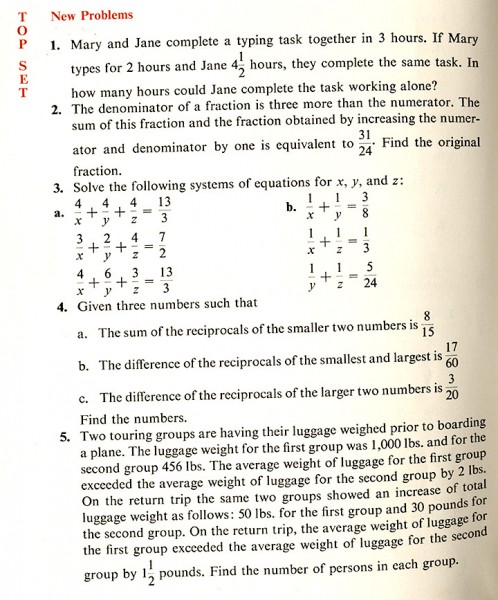 The problem read, “Mary and Jane complete a typing task together in 3 hours. If Mary types for 2 hours and Jane 4-1/2 hours, they complete the same task. In how many hours could Jane complete the task working alone?”
The problem read, “Mary and Jane complete a typing task together in 3 hours. If Mary types for 2 hours and Jane 4-1/2 hours, they complete the same task. In how many hours could Jane complete the task working alone?”
Well, this sounds more like a management problem than a math problem.
- Is Mary a Chatty Cathy who distracts Jane from her typing duties, which would mean that Jane would be faster alone.
- Is Jane a supervisor, who is helping Mary learn the job, so she has to do the work of two?
- If Jane is that slow, shouldn’t we fire her and hire another Mary?
- What if Jane is the only one in the office who knows how to make good coffee or clear the jam in the copier, and she’s constantly interrupted?
Don’t even get me started on all the unlisted variables in the touring group problem at the bottom of the page.
Who cares how high the tree was?
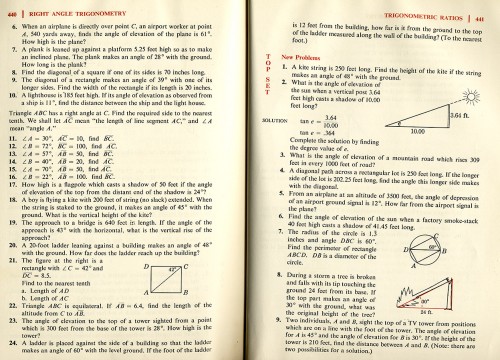 Problem 8 says “During a storm a tree is broken and falls with its tip touching the ground 24 feet from its base. If the top part makes an angle of 30 degrees with the ground, what was the original height of the tree?”
Problem 8 says “During a storm a tree is broken and falls with its tip touching the ground 24 feet from its base. If the top part makes an angle of 30 degrees with the ground, what was the original height of the tree?”
- Who CARES how tall the tree was originally? It ain’t never gonna be that tall again.
- If I’m going to climb up the trunk to determine the exact angle, why don’t I just measure the stump, then say, “Hey, Joe, catch the end of the tape and tell me how far it is to the tip of the tree.” Height of stump plus the distance from the stump to the tip of the tree equals the original height.
- Of course, you’re going to take a productivity hit for the time you take to answer Joe’s question, “Hey, boss, why’d you do that?”
- While I’m up there measuring the height of the stump, I might as well drag along a chainsaw to whack off the widowmaker.
- If I do that, I don’t even have to throw the tape to Joe: I can just say, “Joe, cut those pieces up into four-foot lengths, then let me know how many there are.” See, simple math, I get the truck loaded and I don’t have to explain anything to Joe.
Maybe THAT’S why Misses Rixman and Williams held out hope for me: they saw me as a budding practical mathematician, not a theoretical one.
Or, more likely, they didn’t want me to repeat their course.
 I’m pretty sure the American Ice Cream Drive-In on the left as you come into Jackson was once a Dairy Queen. It wasn’t one of my haunts. (I was more a Wib’s guy.)
I’m pretty sure the American Ice Cream Drive-In on the left as you come into Jackson was once a Dairy Queen. It wasn’t one of my haunts. (I was more a Wib’s guy.) When the resulting brain freeze hit him, he told the family that he thought was having a heart attack. Fortunately, the condition didn’t last long and all he suffered was embarrassment.
When the resulting brain freeze hit him, he told the family that he thought was having a heart attack. Fortunately, the condition didn’t last long and all he suffered was embarrassment.










